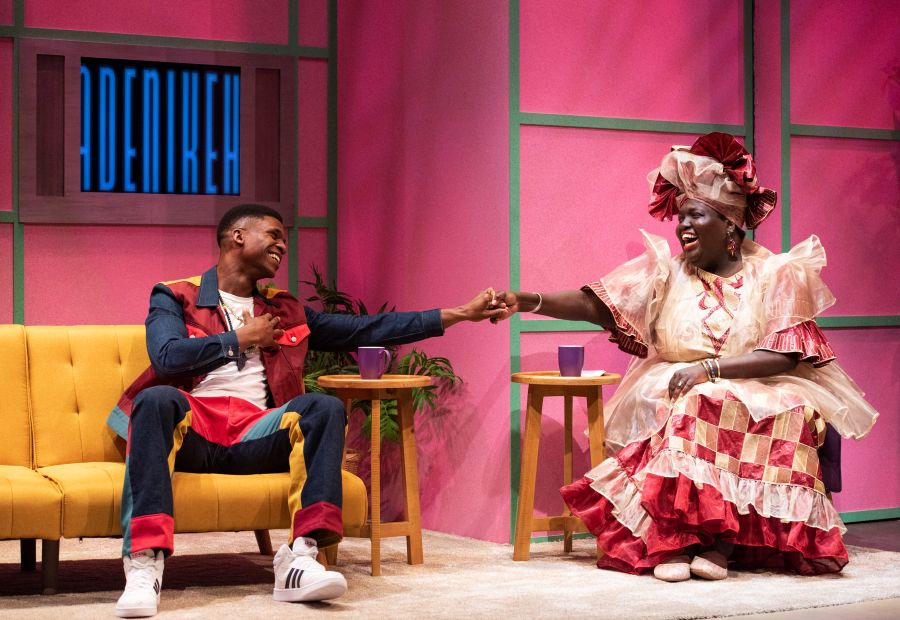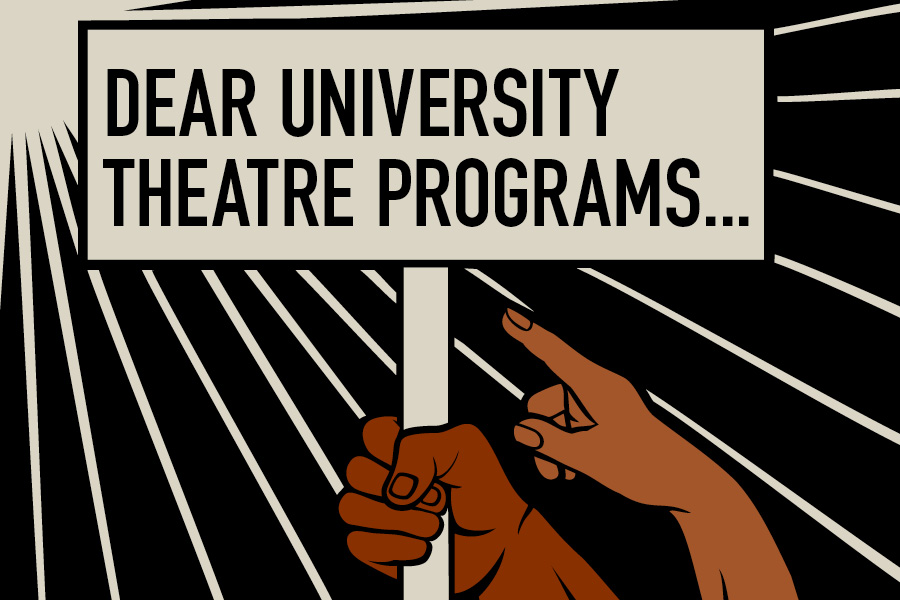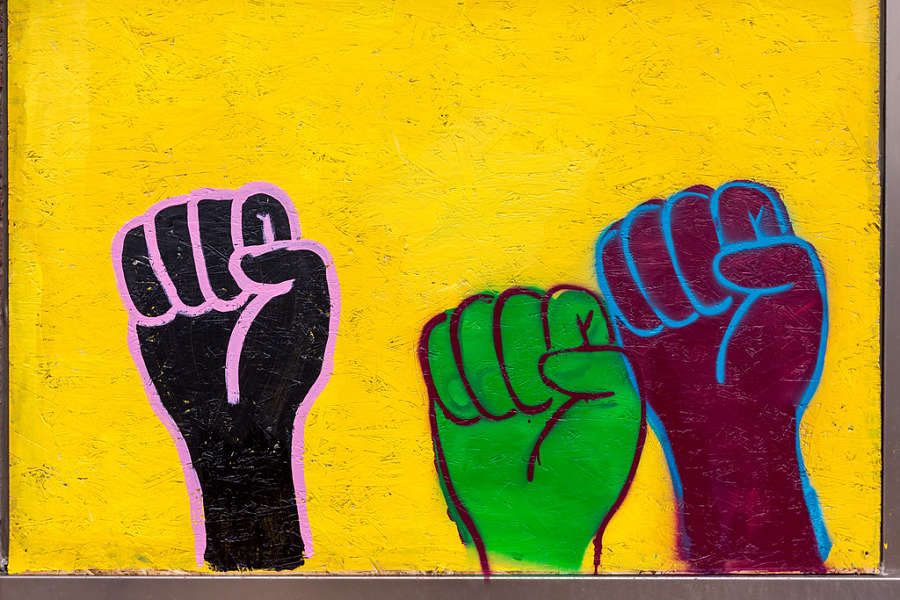Calendar year 2020 will be remembered in history books for the death and disruption wrought by the worldwide Covid-19 pandemic. But perhaps that year’s most lasting cultural impact stems from the terrible moment when the world watched a police officer in Minneapolis, unimpeded by fellow cops, kneel on the neck of an unarmed Black man named George Floyd for eight minutes and 46 seconds, killing him. It was an incident that capped seven years of similar killings of unarmed Black people all over the U.S., which spawned the powerful Black Lives Matter movement.
Being stuck at home with plenty of time to look inward, people around the world examined how and why our society continues to create fertile conditions for deadly prejudice to thrive. Many industries saw new diversity statements and mandated unconscious bias training. Some undertook concrete initiatives to address underserved communities in an attempt to right the wrongs of the past—everything from carrying flesh-toned bandages in big box stores to initiating programs for entrepreneurs of color. In the theatre, that conversation translated to everything from adequate lighting, hair, and makeup training with respect for Black and brown bodies to equitable hiring and work practices. Horror stories emerged as people found the collective strength to come forward.
Conversations about racism in the theatre often rub up against the notion that the arts exist in a bubble beyond the bounds of race. But this time there were serious efforts to hold institutions accountable. In particular, the We See You, White American Theater (WSYWAT) manifesto, released in June 2020, made our industry stop and pay attention. WSYWAT has shaped conversations and aspirations since, becoming a universal reference point. The 31-page WSYWAT document derives its authority from the lived experiences of artists who identify as Black, Indigenous, and/or people of color (BIPOC) who were fed up with the abuses they experienced at work, if they got a seat at the table in the first place. The drafters of the document have remained anonymous to protect individuals from retaliation and blacklisting (a choice which has led to some lingering questions about accountability, both for the WSYWAT project and for the drafters themselves). Not anonymous, however, were the 200-plus signatories of WSYWAT’s introduction, which included Pulitzer-winning playwrights and artistic directors at major regional theatres as well as such name artists as Sterling K. Brown, Cynthia Erivo, Lin-Manuel Miranda, Issa Rae, and Anika Noni Rose.
The pièce de résistance within the document is a list of demands covering everything from land acknowledgements to rehearsal processes to press coverage. Some key demands from theatres include:
- That theatres create a safe, anti-racist environment for BIPOC artists and audiences
- That they establish long-term (rather than jobbed-in or freelance) relationships with BIPOC artists
- That plays with BIPOC authors represent no less than 50 percent of theatres’ mainstage programming, with salaries and royalties equal to the institution’s highest tier
- That power in the rehearsal room should be yielded to those who share cultural context with the work, especially when the director is white
- That white directors, playwrights, actors, and designers begin implementing universal BIPOC inclusion/equity riders that state they will only go to work if their specific department, team, and company is at least 50 percent BIPOC

The list of demands met a wide range of reactions from industry professionals. Some found them unrealistic or irrelevant. Many theatre leaders, though, took them quite seriously and spent several meetings unpacking and discussing them. Others felt that their experiences were validated by the sentiments expressed. Nataki Garrett Myers, board chair for Theatre Communications Group, said she signed the WSYWAT document because it let her know that some of her experiences as a freelance artist and theatre leader were not singular.
“It said that we as relatively marginalized artists across this theatre field deserve better,” said Garrett Myers. “It was revolutionary, because for a long time the American theatre rested on its laurels from the August Wilson, Black Arts Movement, and Lloyd Richards era. Yet I, along with many of my colleagues, had experienced tremendous trauma in the American theatre.”
Indeed, different theatre and educational institutions were (and still are) at different places along the road to realizing long-stated goals of diversity, equity, inclusion, belonging, and access. Some already had these principles built into their strategic plans from the beginning, or had been doing work around diversity and equity under various rubrics well before 2020. Others had made real strides toward making tickets more affordable and facilities more welcoming. Others were (and still are) on the ground floor when it comes to building relationships with communities beyond their existing patron and donor base.
Whatever the qualifiers or responses, the WSYWAT document couldn’t be ignored. Emerging at a time when the world was on a collective pause, it welcomed the deep contemplation and deliberate application of collective tactics and objectives for accountability. Nicole Brewer, another signer, director, and the founder of the training program Anti-Racist Theatre, said she has seen the impact of the document in her work.
“I think WSYWAT, just five years out, has reached so many people’s consciousness, and that can’t be erased,” Brewer said. Some large, predominantly white institutions, she half-joked, “went through WSYWAT like it was Shakespeare. It was for them—it was written in a way that white folks would understand, using the system against itself. There’s nothing in WSYWAT that had not been spoken over and over and over again, even if it wasn’t the full articulation of a sentence, even if it was only in the exhalation of the breath of the oppressed.” Now, she said, these institutions “can no longer say, ‘We didn’t know.’ Before WSYWAT, people could hide behind that.”
Now, as the urgency of that moment recedes, we are faced with a fresh surge of backlash, as the current presidential administration seeks to prosecute any programs with stated goals of “DEI.” Five years later, we find ourselves at a critical time to revisit those demands and see where we are—and where we still must go.
Additional Reading
What the Numbers Say
To gauge the industry’s progress on a few of WSYWAT’s central demands, AT editors took a random 10 percent sample of all Theatre Communications Group (TCG) member theatres and tracked the number of directors and writers of color credited at those theatres from January 2020 to December 2024 (full list of theatres below). We felt that this data slice would be representative in two ways: First, the 44 theatres whose shows we tallied included a wide range of organizations, from small and mid-size professional theatres to large resident theatres, predominantly white institutions (PWIs), as well as Black, Indigenous, and theatres of color (BITOCs). Second, a focus on directors and writers (which we defined to include composers, lyricists, and adaptors as well as playwrights) felt meaningful, as the identities of the people hired for those positions can often determine or at least influence the identities of other artistic personnel.
We looked at 619 productions at those 44 theatres in the five-year period that began just before Covid and ended last December. While many theatres did cancel productions or functionally shut down for a time in 2020 and 2021, we did also tally virtual mainstage productions in that period (though not one-night readings or workshops). The production tally for each year in the sample theatres tells a story in itself: just 53 shows in 2020, up to 85 in 2021, surging to 155 in 2022, 176 in 2023, and 150 in 2024.
- Arts Center of Coastal Carolina
- Cadence Theatre Company
- Center Repertory Company
- Charleston Stage
- Chicago Shakespeare Theater
- Cleveland Play House
- Crowded Fire
- Creede Repertory Theatre
- Folger Theatre
- Forward Theater Company
- Fountain Theatre
- HartBeat Ensemble
- Hartford Stage
- Horizon Theatre Company
- Hyde Park Theatre
- Junebug Productions
- KC Melting Pot Theatre Productions
- McCarter Theatre Center
- Metro Theater Company
- Native Voices
- New Jersey Repertory Co
- New Light Theater Project
- North Coast Repertory Theatre
- The Open Eye Theater
- Pioneer Theatre Company
- Playmakers Repertory Company
- Rec Room Arts
- Red Bull Theater
- Round House Theatre
- San Luis Obispo Rep
- Springer Opera House
- Stage Aurora
- Syracuse Stage
- TeAda Productions
- Teatro Vista Productions
- Theater Grottesco
- Theater J
- Theatre Workshop of Nantucket
- TheatreZone
- TimeLine Theatre Company
- True Colors Theatre Company
- Vermont Stage
- The Village Repertory Co
- Williamstown Theatre Festival
One of the most significant demands in the WSYWAT document, as we noted, was that half of all creative teams for mainstage productions should be BIPOC-identifying individuals, and that half of all plays programmed were by BIPOC playwrights. That 50 percent bar, by the way, reflects the changing demographics of the U.S., which, according to U.S. Census projections, is on track to have a majority non-white population as early as 2045.
How did our sample do? From January 2020 to December 2024, those 44 theatres employed 167 BIPOC directors out of 373 hired from all backgrounds, with BIPOC directors credited on 237 pro- ductions out of that 619 total. And of the 548 writers credited for those 619 productions, 150 were people of color—specifically, 6 self-identified as mixed race, 3 as Native or Indigenous, 90 as Black, 23 as Latine, 21 as Asian American or Pacific Islander (AAPI), and 7 as Southwest Asian or North African (SWANA, also known as MENA, for Middle Eastern or North African). The total number of shows with a writer of color was 183.
Put in percentages: 45 percent of all the directors hired at our 44 sample theatres were BIPOC, while just 27 percent of the writers credited in our sample in that period were BIPOC. There’s another way to look at the total numbers: If you count not personnel but programming, 38 percent of all shows had a BIPOC director, while around 30 percent of all shows had at least one credited BIPOC writer.
Viewed in raw numbers, this is obviously not where WSYWAT demanded the field should be. These statistics do measure some real progress worth building on: A study from 2019 by the Lillys and Dramatists Guild, the Count 3.0, found that just 20 percent of playwrights that year were people of color (though admittedly their sample and methodology were different from ours). Looking behind the statistics in several interviews with directors and playwrights about their experiences of the last few years, as well as with artistic leaders who’ve responded to the document’s demands, we similarly found both some encouraging signs—and plenty of room for improvement.
Cross-Cultural Solidarity
Breaking down the statistics for playwrights into BIPOC vs. white doesn’t tell the whole demographic story, of course. In our 44-theatre sample, just 4 percent of credited writers identifi ed as Latine, though they represent close to 20 percent of the U.S. population and are one of the nation’s fastest-growing groups. And playwrights who identify as Indigenous didn’t even reach a meaningful percentage in our sample, with just 3 writers. (Their percentage of the U.S. population is 2 percent.)
Playwright/director Tara Moses, Seminole nation of Oklahoma and of Muscogee/Creek descent, believes that part of the “progress” achieved by the WSYWAT demands was simply that they made white folks who run theatres afraid of being canceled. As she senses that panic waning and theatres appearing to revert to pre-pandemic habits, Moses—who also co-founded Groundwater Arts—wishes that BIPOC artists had pushed for more when they had the chance.
“I think the biggest disappointment for me was, when we had that brief, beautiful moment of all of these theatres and institutions being scared, maybe because of colonial fear rooted in scarcity and capitalism, WSYWAT didn’t capitalize on it,” said Moses. “That was literally the time. It was such a narrow window of opportunity to tear this down and build back as it always should have been.” She attributed the lack of follow-through to trepidation on the part of artists. “I think it was the fear. It was the circumstances people were in, the insecurity around jobs and whatnot, which I understand.”

Moses said she has found some hope in instances of cross-cultural solidarity. She told a story about how, when Company One in Boston was about to premiere her play Haunted, she planned to have a smudging ceremony, a rite that involves the burning of sacred herbs, prior to the show as part of her typical process as a Native artist. But when the required fire marshal, hired for legal and safety reasons, didn’t show up on the appointed day, Company One’s managing director Karthik Subramanian, an East Indian American, insisted on honoring the tradition—even offering to delay opening night until a fire marshal arrived.
“In my entire career, and I’ve been doing this since I was eight years old—a while—I have never experienced a fight for a very specific cultural experience where I didn’t have to do it,” said Moses. “I’ve had to fight in so many places, but this is the first time a non-Native person did the fighting for me—and went further than I would have gone.”
Moses’s example demonstrates the WSYWAT demand around cultural agency, which states in part, “When producing/programming BIPOC stories, a full commitment to honoring the cultural specificity of those stories is required.” Moses’s cultural ceremony was considered just as important as any Western narrative structure, and was therefore protected.
Moments like what Moses described are still too few and far between at PWIs. But they are typical of the kind of solidarity that artists of color have long shown each other. Indeed, this has been the way artists of color have navigated the theatre industry, long before WSYWAT came along. Rad Pereira, an artist focused on what they call the “queer re-Indigenization of culture,” said in an interview that it’s important to credit the grassroots work that preceded 2020, and to distinguish revolutionary aesthetic from revolutionary practice.
“It’s hard to know the direct impact from WSYWAT,” said Pereira. “From where I stood, it seemed like it perpetuated this revolutionary aesthetic, as opposed to making actual, tangible change. I think the small ways have been more transgressive. To quote adrienne maree brown, ‘Small is all.’ How do we bring abolition, democracy, and accountability to our day-to-day?”
Like Pereira, José Casas, another signer of WSYWAT, and the author of ofrenda and somebody’s children, among other plays, said he is finding inspiration for change in the actions, big and small, of his peers. “We have a ton of artistic directors, but not enough leaders,” he said, pointing to one shining example in Jacob Padrón, who made the tough decision to release Long Wharf Theatre from its longtime artistic home in New Haven, Connecticut, to sustain he organization as an itinerant and more community-responsive company. “We need more Jacobs.”
Mind the Gap
Chicago-based director Mikael Burke was on a roll before the Covid-19 pandemic, and, despite that setback, it has picked up again in the years since. The 2018 DePaul directing MFA graduate had just directed two Jeff Award-nominated shows and was set to helm a production in Wisconsin when the lockdown shuttered in-person productions. When the WSYWAT document dropped, he felt as if it was “saying the quiet part out loud.”
“I have had instances at certain theatres where artistic directors suggest that the reason that there aren’t more people who look like me directing shows is because there aren’t enough well-behaved, well-spoken people with terminal degrees who look like me out there,” said Burke, who is Black. “The institutions want to put the onus on us out here as the reason why they can’t do anything to mitigate the gap.”
Burke was getting ready for tech rehearsal at Children’s Theatre Company when we spoke. Even with all the wins of the past few years, he said he hasn’t been able to have as much say as he would like over the diversity of the design teams he works with. One call to action in the WSYWAT document is about hiring 50 percent BIPOC design teams. But when urgency meets scarcity, risk-taking dissipates.
“Many institutions are not interested in hiring someone unless a person has a certain amount or kind of credits, and until that is overcome, I don’t know how we create equity,” said Burke. “I’m guilty of it too—when I’m anxious about how we’re going to pull this off, rather than giving an opportunity to a new designer, I’ll work with that same friend I’ve worked with for years. There’s a reframing that has to happen around how we’re cultivating the cohort we are looking to expand.”
For his part, Kareem Fahmy said that his directing prospects were lacking in March 2020, despite having previously earned prestigious directing fellowships at Sundance Theatre Lab, Oregon Shakespeare Festival, the Eugene O’Neill Theatre Center, and Lincoln Center. So he created a BIPOC directors list in 2021 to help connect more directors of color with professional theatre gigs. In the meantime, as he waited for new directing offers, he spent the Covid-19 lockdown period writing, and it paid off: His plays A Distinct Society and American Fast have received nearly a dozen productions between them.
In a happy twist, his plays have opened doors for him as a director of his own work, at least. But he still sees himself pigeonholed as writing about and for MENA folks. He would like to see directors treated more as artists than as product makers in the American theatre.
“In our field, directors should be at the top of the food chain in addressing access for underrepresented communities,” said Fahmy. “As directors we are able to move representation forward through our lived experience. But I fear and suspect that the director isn’t viewed as a generative artist.”

Walking the Walk
Solidarity among artists of color is its own hill to climb, but there is also the need for buy-in from artistic directors and producers, many of whom are white, at well-resourced theatre companies. Rebecca Novick, a consultant with Creative Evolutions, and director Evren Odcikin tracked the changeover of artistic, executive, and managing directors at regional theatres by race from 2017 to 2021, and their data reveals something about where power is held. Of the 120 artistic director positions that came open during that time, 42 were filled by people of color—and many of those have turned over again in the years since.
Jennifer Bielstein, executive director of American Conservatory Theatre (ACT) in San Francisco, said that when the WSYWAT document was published, she read it many times and went through it with her board to see what ACT had done or could do to align with the document’s demands.
“Of the 320 items we counted that could apply to a theatre like ours, we were already doing about 70 percent of them, so we focused on the balance and reviewed with representatives from every department and our EDI committee and prioritized and implemented more,” said Bielstein. “We are grateful for the work that went into creating the document and articulating the concerns in our field and offering solutions to address them. We found it incredibly useful.”
ACT, which was not part of our 44-theatre sample, does seem to be walking the walk: Since Pam MacKinnon’s hiring as artistic director in 2018, Bielstein said that ACT has moved toward at least half of their mainstage plays being written and directed by artists of color, and 82 percent of their commissioned writers are people of color.
Jade King Carroll had nearly two decades of experience (and trauma) as a freelance director before taking the helm of Chautauqua Theatre Company (CTC) in upstate New York. She recalled working for free or no money, even picking up mice backstage, while training as an assistant director and bartending to make ends meet. At CTC, she has had the chance to create for others the artistic home she always wished for as an artist. The company has a partnership with the Drama League to support three directing fellows who get paid $700 per week plus health insurance and housing for the duration of the theatre’s summer season. In addition, CTC is commissioning plays by Kwame Alexander, Zora Howard, and C.A. Johnson over the next few years.
“Part of creating the culture is the artists you’re inviting in and the conversations that those plays have,” said Carroll. “As an artist, the way that I want to create a room, create theatre, create community, and have conversation with community lines up with something that is equitable.”

Ryan Rilette, artistic director at Round House Theatre in Bethesda, Maryland, noted that the theatre was already on the path to EIDA, as they call it (equity, inclusion, diversity, and access), before the upheaval of 2020. Building relationships with the diverse communities in the D.C.-Maryland-Virginia area has been mission critical for the theatre, which was among the 44 sampled theatres, and where, according to Rilette, 48 percent of the shows produced in the last decade were written by playwrights of color.
The WSYWAT declaration, Rilette said, simply accelerated their expansion of access programs for people on the autism spectrum and programs for teens, as well as outreach to Montgomery County’s large West African community. These kinds of shifts can seem intimidating to some artistic leaders who rely on stable and often homogeneous audience and donor bases. But Rilette said that 2022-23 and 2023-24 have been two of the highest-grossing seasons in the theatre’s history, and it’s because of these investments in the community.
“You have to build and plan for change,” said Rilette. “It’s the same thing when you start a new company—there’s a period of transition. Yes, you will lose some people, but you’ll gain more people long-term. You have to show commitment to the community you’re trying to reach out to.” He added, “We want our theatre to reflect the community, which is not a complicated idea. If we’re going to survive as an institution and an art form, we have to serve more than one small group of people.”
Of course, some theatres were expressly built to serve and reflect their community, like the eight theatres of color in our 44-theatre sample (of our current 430-member roster, we count 43 theatres of color). Most theatres of color by definition have DEI at the core of their mission, and were in fact founded to counter the segregation, harm, and exclusion many artists of color have experienced in white institutions. Yet most theatres of color don’t receive the level of funding that white theatres receive—particularly money earmarked for diversity programs. Addressing this funding discrepancy was another part of the WSYWAT document, which demanded that major foundations give multi-year gifts to theatres of color, eliminate budget requirements, allow operating expenses to be covered by major gifts, and fund the acquisition of space.
Nicole Hodges Persley, artistic director of Kansas City Melting Pot Theatre (KCMPT), said that they have received some additional funds as a result of increased awareness around issues of equity, including a 2021 program called The Black Seed, but that they still don’t get funding comparable to white institutions in the area. At this point, Persley said, she’s interested in equity, not accommodation or concessions.
“Fairness and justice should be the expectation,” said Persley. “It’s not something one should have to petition for. I don’t feel that our artists should have to ask for permission to do the work that they are skilled and able to do.”
The Pendulum Swings
For all of the gains made by institutions and individual artists, the American theatre does seem in danger of losing some of the ferocity and fervor for change that stirred and followed the publication of WSYWAT. What’s worse, recent executive orders from the current administration targeting DEI jobs, programs, courses, and initiatives have left many theatre workers fearful and uncertain—especially those who’ve responded to or relied on WSYWAT’s demands for theatre spaces of more intentional diversity and belonging. Many people we contacted for interviews for this article declined out of fear of being fi red, blacklisted, or doxed.
At a recent TCG arts advocacy gathering, intended in part to address new guidelines at the National Endowment for the Arts that require compliance with the executive orders targeting DEI programs and so-called “gender ideology,” panelists recounted the historical ebb and flow of change and the swinging pendulum of justice. Artist and activist Corinna Schulenburg, who is also TCG’s co-lead of research programs, cited the example of Belarus Free Theatre, who countered state-based oppression by making a list of 16 taboo topics and devoting plays to each one. Their decision: “Every new show they made would constitute an artistic explosion about these taboos.” Schulenburg wondered what those artistic bursts might look like for our U.S. theatre ecology.
Despite the frightening uncertainty of the present moment, though, some theatre workers will not be cowed or distracted.
“We can’t back down,” Chautauqua Theatre’s Carroll said. “We have to think of ways in which we can keep doing the work. We’re artists, we’re storytellers, we’re wordsmiths. How do we control the narrative? We don’t retract. We keep doing the work.”
Gabriela Furtado Coutinho (she/her) is the digital editor of American Theatre and a playwright/actor. Kelundra Smith (she/her) is the director of publications at Theatre Communications Group as well as an award-winning playwright.
Support American Theatre: a just and thriving theatre ecology begins with information for all. Please join us in this mission by joining TCG, which entitles you to copies of our quarterly print magazine and helps support a long legacy of quality nonprofit arts journalism.





